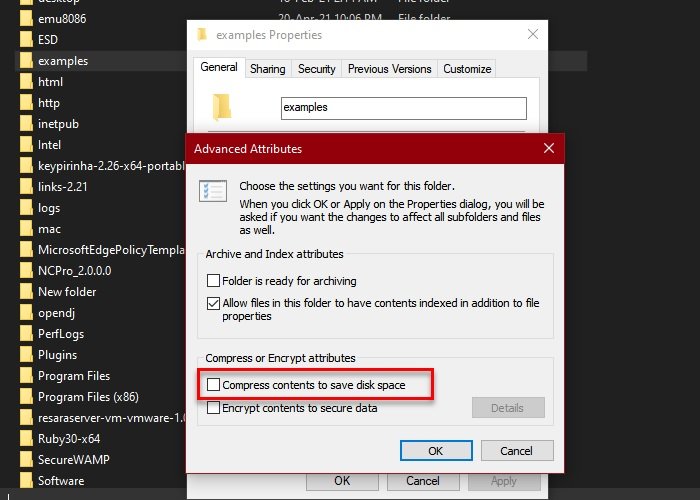Compression, for the most part, is good for your system as it compresses big files into a small packet that ends up consuming less space on Hard Drive. However, you may want to decompress some files if a folder is compressed without your consent. In this article, we are going to see some easy ways to decompress all files on Windows 1/110.

It is pretty simple to know, which folder is compressed in Windows 11/10. If you see two blue arrows icon overlay on a particular folder, this means that it is compressed. So, if you are not sure whether a folder is compressed, or not, just remember this simple trick. By the way, you can also show Encrypted or Compressed file names in color.
How to Decompress all files on Windows 11/10
Before starting, you need to keep one thing in mind, if your Hard Disk is small, decompressing is probably not the right option for you. But still, if you want to do it, use the following methods.
These are the ways by which you can decompress all files on Windows 11/10.
- By File Explorer
- By Command Prompt
Let us talk about them in detail.
1] By File Explorer

This is the simplest method to decompress a file on Windows 10. So, to do that, follow the prescribed steps.
- Launch File Explorer from the Start Menu.
- Navigate to the compressed folder, right-click on it and select Properties.
- Click Advanced to launch Advanced Attributes.
- From “Compress or Encrypt attributes”, untick Compress content to save disk space, and click Ok.
- Now, click Apply (select options accordingly) > Ok.
This way, the file is decompressed. However, this is not why you are here. You are looking for a method to decompress all files, so, check out the next section to do the same.
Read: Windows computer will not boot because you compressed the system drive.
2] By Command Prompt
You can use the “Compact” command in the Command Prompt to decompress all files on Windows 10. It is pretty simple and you just need to type a command to get it done.
Launch Command Prompt as an administrator from the Start Menu, type the following command and hit Enter.
Compact /s /u
- /s will select all the sub-directories.
- /u will uncompress the selected directories.
Wait for the process to complete and all the files will be decompressed.
Note: Compact command only operates on the default directory.
If you want to know more about the other things you can do with the “Compact” command, just type the following command in Command Prompt and you will be good to go.
Compact /?
Now, you can see all the commands that you can replace “?” with in order to perform a specific task.
Hope we have helped you to decompress all the files on Windows 10.
Related:
Leave a Reply